Get PeakVisor App
Sign In
Search by GPS coordinates
- Latitude
- ° ' ''
- Longitude
- ° ' ''
- Units of Length

Yes
Cancel
Share ×

Scan the QR code and open PeakVisor on your phone
❤ Wishlist ×
Choose
Delete
Governed by the Pyramid Lake Paiute Tribe, the Pyramid Lake Paiute Reservation encompasses 475,000 acres (192,226 ha) of remote desert in the US state of Nevada. There are 13 named mountains in the Pyramid Lake Paiute Reservation, the highest and most prominent of which is Tohakum Peak (8,182 ft/2,494 m).
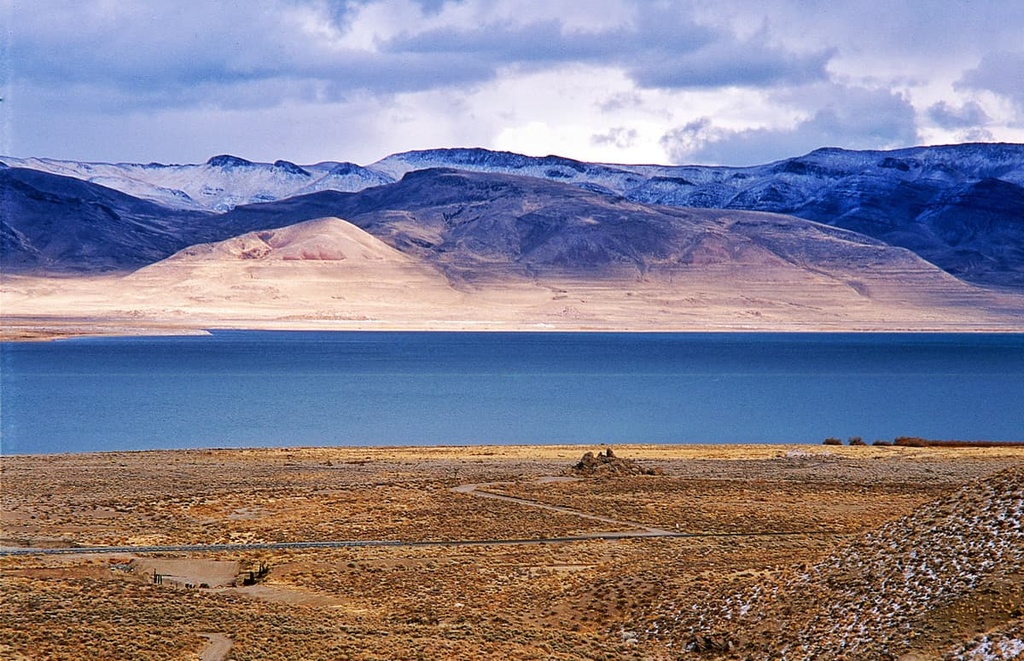
The Pyramid Lake Paiute Reservation is an area of sovereign territory governed by the Pyramid Lake Paiute Tribe (Kooyooe Tukadu). It is located in northwestern Nevada, approximately 35 miles (56 km) to the northeast of Reno. It lies mostly within Washoe County, but it also stretches into portions of Lyon County and Storey County.
The reservation is centered around Pyramid Lake, a 112,000-acre (45,325 ha) endorheic lake that is fed by the Truckee River. In Numu (Northern Paiute), the lake is known as Cui-ui Pah or Kooyooe Pa'a Panunadu. It is home to many sites that are sacred to the Pyramid Lake Paiute Tribe.
Lake Tahoe (Dáʔaw) forms the headwaters that drain to Pyramid Lake. However, before the Truckee River can deposit water into Pyramid Lake, it must first travel over 105 miles and traverse the lofty Sierra Nevada in California.
A remnant of the ancient Lake Lahontan, Pyramid Lake is about 26 miles (42 km) long and 11 miles (18 km) wide. It reaches a maximum depth of 350 feet (107 m) and has a water volume of nearly 22 million acre-feet.
Anaho Island lies in the southern portion of Pyramid Lake. The Paiute name for the island is Paisakatudu, which translates roughly to “the dry island sitting out there by itself.” The island has historically fluctuated in size, depending on lake levels, and is protected by the Anaho Island National Wildlife Refuge.
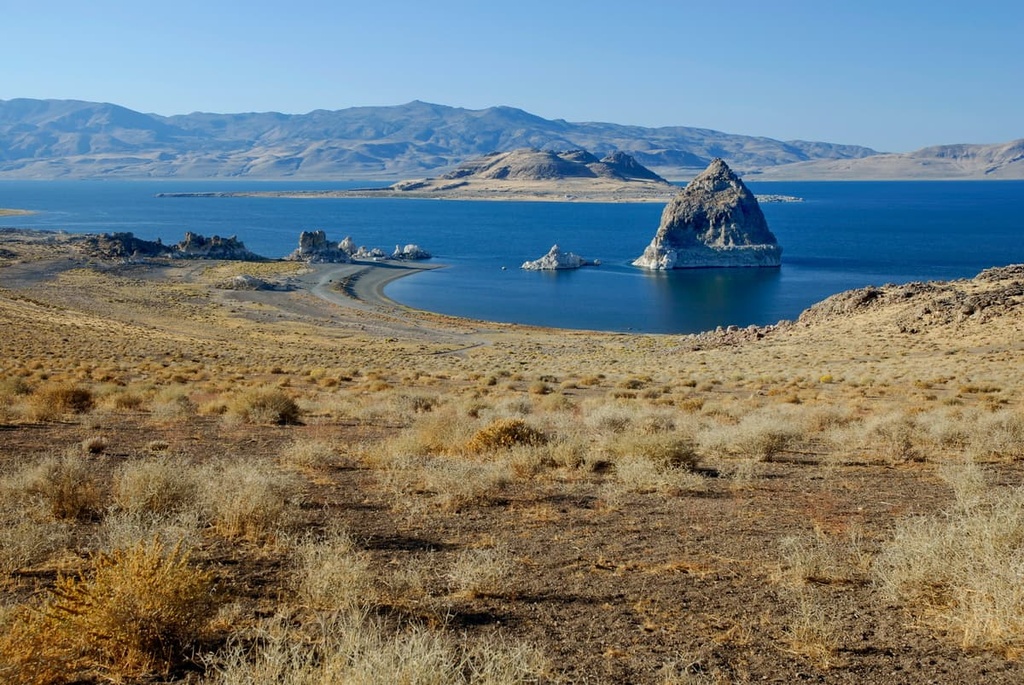
The Pyramid Lake Paiute Reservation also contains a small portion of Winnemucca Lake, a dry lakebed that lies between the Lake Range to the west and the Nightingale Mountains and Selenite Range to the east.
Most of the Lake Range, as well as a portion of the Virginia Mountains and Pah Pah Range, lie within the Pyramid Lake Paiute Reservation. Elevations in the reservation range from 3,820 feet (1,164 meters) at lake level to 8,182 ft (2,494 m) at Tohakum Peak, which is located to the east of Pyramid Lake.
Typical of the Basin and Range Province, the land of the Pyramid Lake Paiute Reservation is characterized by alternating, north-south trending, faulted mountains, and flat valley floors. Mountain ranges in the reservation, like the Lake Range, drain into intervening valleys, where water and sediment accumulate as playas and desert lakes.
Much of the Basin and Range Province was shaped by tectonic extension that began in the Early Miocene. During the late Pleistocene Epoch, Pyramid Lake and now-dry Lake Winnemucca were two of seven smaller lakes that collectively formed Lake Lahontan, an enormous ancient lake that once covered much of western Nevada.
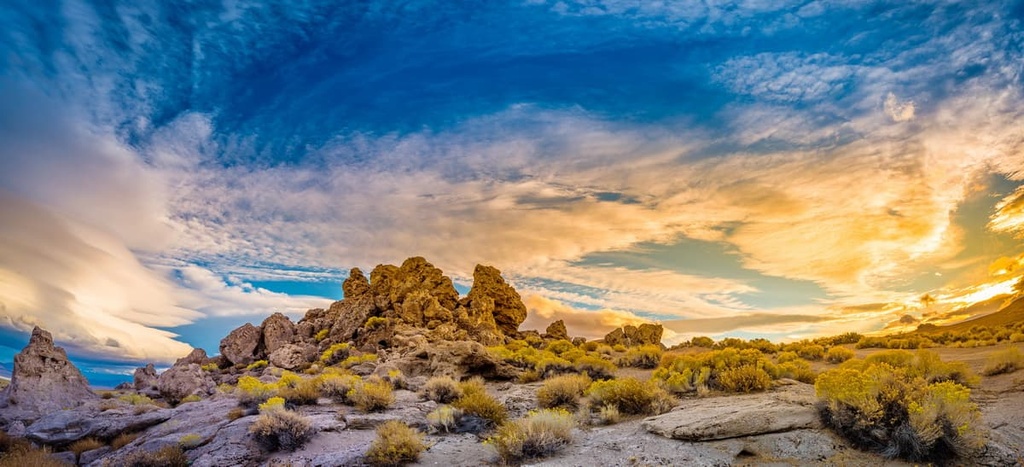
The Pyramid Lake region is most notable for its unique and interesting tufa formations. These striking landforms formed in the Pyramid Lake subbasin roughly 26,000 and 13,000 years ago, when calcium-laden spring waters discharged from the bottom of the ancient lake and combined with the dissolved carbonates in lake water.
Interesting examples of these formations include the Stone Mother, Popcorn Rock, Indian Head Rock, Pelican Point, and the Needles Rocks. The Stone Mother, in particular, is a sacred site to the Pyramid Lake Paiute Tribe, as are many other sites around Pyramid Lake.
The Pyramid Lake area has a semi-arid climate, with an annual precipitation range of less than 7 inches (178 mm) in the basins to 18 inches (457 mm) in the high mountains. The amount of precipitation received in the region is directly correlated with elevation.
Despite the aridity of the area, the lower Truckee River is an important corridor and habitat to a variety of wildlife species, including the threatened Lahontan cutthroat trout and the endangered cui-ui (kooyooe). Pyramid Lake is one of the last remaining strongholds for Lahontan cutthroat trout (agi), which is the largest cutthroat species.
Although cui-ui also inhabit the lake year-round, they are stream spawners and regularly use the lower 30 miles (48 km) of the Truckee River during spawning season. Other native fish in the lower Truckee include the Tahoe sucker, mountain sucker, Lahontan redside, speckled dace, mountain whitefish, and the Lahontan tui chub.

Riverbanks and wetlands near the lower Truckee sustain populations of the rare northern leopard frog and western toad, while riparian zones sustain a variety of small mammal species and reptiles. Black bears, mountain lions, black-tailed mule deer, and coyotes are also known to frequent the area in search of food and shelter.
Additionally, Anaho Island is the nesting grounds for one of the largest breeding colonies of American white pelicans in the US. Annually, over 8,000 pelicans return to Anaho Island from their winter habitat in southern California and Baja, Mexico. More than 30 species of waterfowl also migrate to Pyramid Lake during the winter months.
The Northern Paiute (Numu) people have lived and thrived in the Pyramid Lake region for over 600 years, using fish from the lake for sustenance and local plants for fiber, dyes, and medicine. Many of the mountains and valleys that surround the reservation today are sacred to the Tribe and the traditional territory of the Numu extends far beyond the boundaries of the reservation.
The Pyramid Lake Paiute Reservation is governed by the sovereign Pyramid Lake Paiute Tribe, which represents two Northern Paiute bands, the Kuyuidökadö, known also as the “Cui-ui-Fish-Eaters" and the Tasiget tuviwarai, which translates to "Those who live amidst the mountains.”
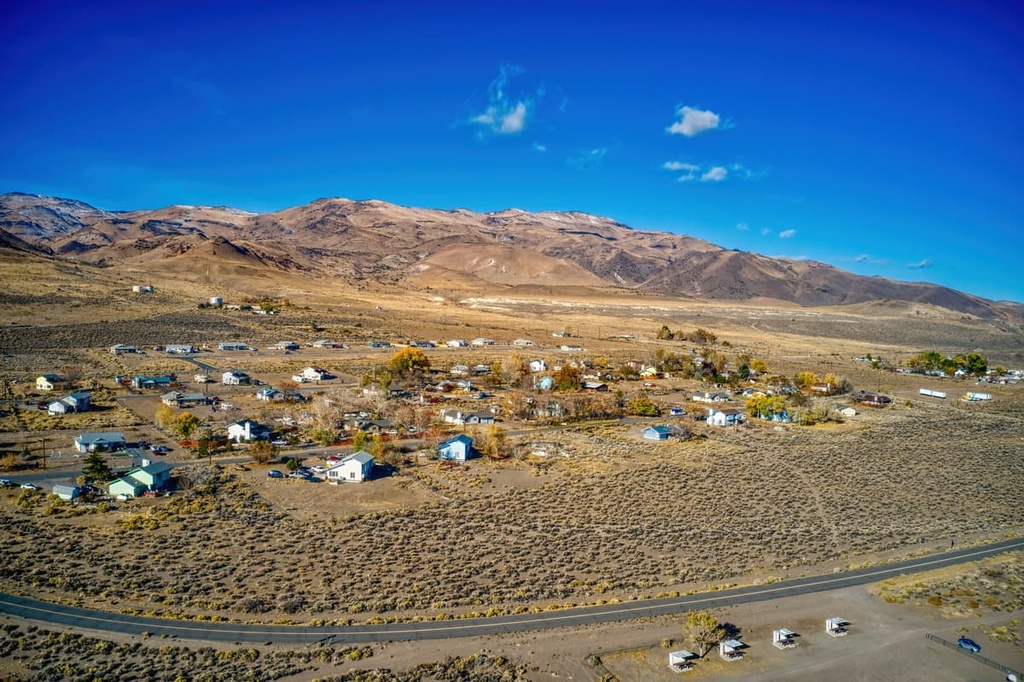
In 1844, the first White settler, John C. Fremont, arrived in the Pyramid Lake region and gave the lake its English language name as a reference to the pyramidal tufa that rises from its eastern shore. Known as Stone Mother, this striking rock formation is sacred to the Pyramid Lake Paiute Tribe and is associated with the lake’s creation story.
The discovery of silver in the area during the mid 1800s attracted more White colonizers and miners to Pyramid Lake region. Euro-American immigrants devastated important natural resources and forcefully seized critical water sources and grazing lands from the Paiute.
Around this same time, the region was embroiled in a large confrontation known as the Pyramid Lake War of 1860. The war was instigated by a rush of settlers to the Pyramid Lake region who were drawn to the prospect of gold and silver mining.
It was arguably one of the largest armed confrontations between the US and Indigenous Tribes. Although the total number of casualties from the war is unknown, it ultimately led to the loss of Tribal sovereignty and control over the region.
In 1859, the first agent of the Western District of the Office of Indian Affairs, requested that Pyramid Lake be preserved for the Kooyooe Tukadu. The status of the reservation was ambiguous until President Ulysses S. Grant upheld its status in 1874.
However, the construction of the Derby Dam on the Truckee River in 1905 wreaked havoc on the natural ecosystems of the Pyramid Lake area. The dam was constructed to divert large quantities of water to support agriculture in an arid desert.
As a result, the water levels of Pyramid Lake dropped by more than 80 feet (24 m), causing the local extinction of the Lahontan cutthroat trout. The Pyramid Lake Paiute Tribe has done extensive work to lobby for improved water quality in the region.
Members of the Tribal Nation have also been instrumental in the conservation of the Lahontan cutthroat trout, particularly when it comes to working with hatcheries and stocking lakes to ensure the species’ survival.
Today, the Pyramid Lake Paiute Reservation covers 475,000 acres (192,226 ha) of northwest Nevada and contains three communities: Wadsworth, Nixon, and Sutcliffe. Much of the reservation’s economy is centered around outdoor recreation and fishing, so you can support the Tribal Nation by paying recreation permit fees and shopping local during your visit.
Visitors are welcome to recreate at Pyramid Lake. However, if you’re traveling to the lake, you’re expected to abide by all Tribal laws and restrictions.

Additionally, parts of the reservation are sacred to the Numu and are off limits to visitors. Always ensure that you stick to areas that are open to the public and that you avoid closed areas during your stay.
With that in mind, the most popular outdoor recreation destination on the reservation is easily Pyramid Lake.
Pyramid Lake is one of the largest lakes in Nevada and is considered a world-class fishing destination. The lake is surrounded by spectacular rock formations and is a great place for wildlife viewing. Visitors to Pyramid Lake can also learn about the area’s fascinating history at the Pyramid Lake Paiute Museum and Visitor Center.
Much of the lake’s eastern shoreline is closed to visitors. However, visitors are encouraged to visit one of the many beaches and marinas that are open to the public on the lake’s western shoreline.
For more information about outdoor recreation opportunities and requirements at Pyramid Lake, head to the Tribe’s official tourism website.
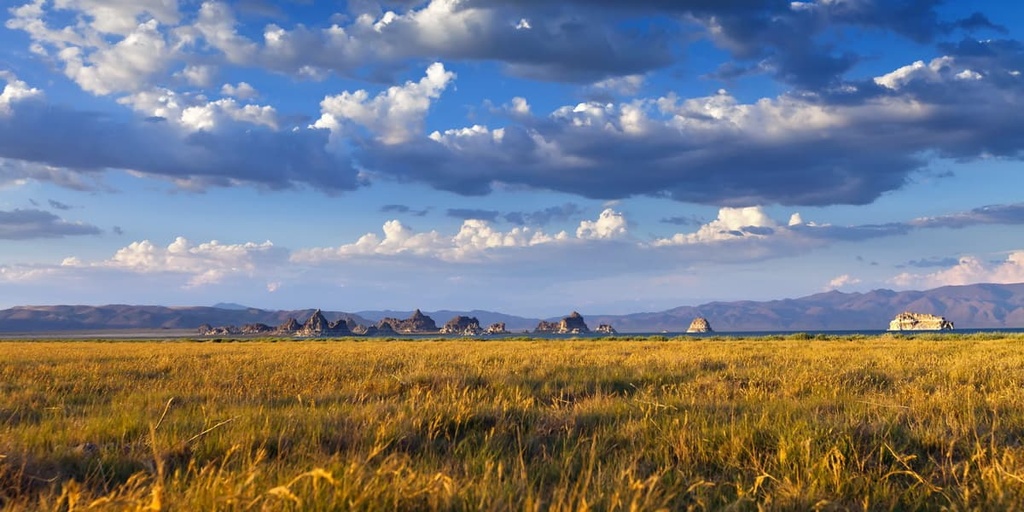
The Pyramid Lake Paiute Reservation lies in a remote, sparsely populated, region of Nevada. However, if you’re visiting Pyramid Lake, these are some of the best places to stay.
Nixon is the seat of the Pyramid Lake Paiute Tribal Headquarters, and it is home to Tribal Administration offices, the Housing Authority, the Tribal Police, the Tribal Court, and the Natural Resources Division. Nixon is a very small community with fewer than 1,000 permanent residents, but it features the Reservation Visitor Center and Museum.
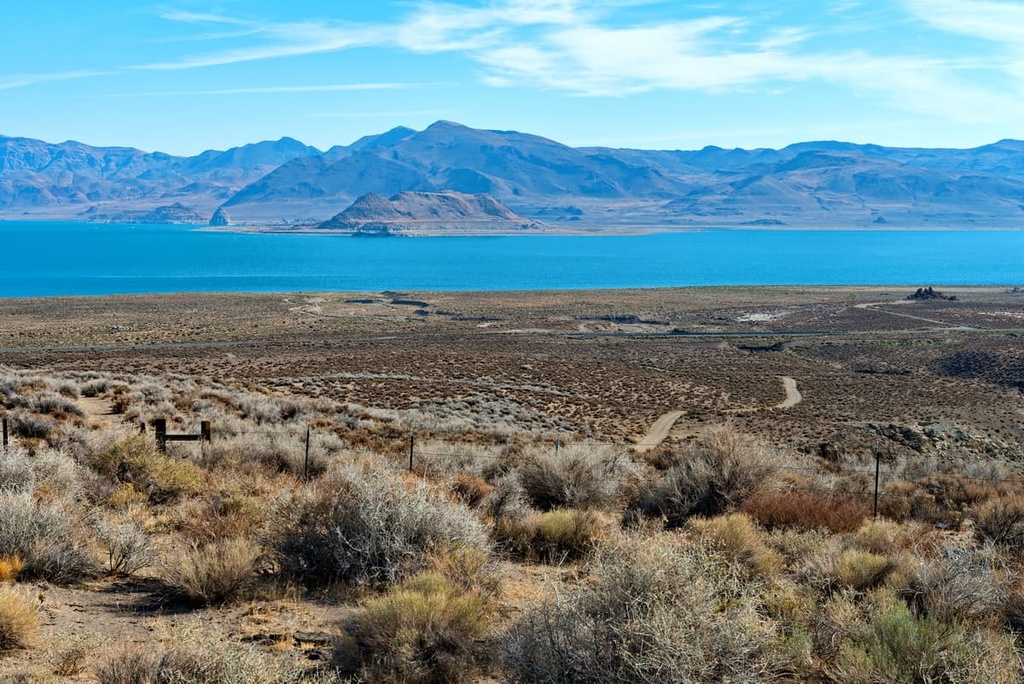
Located on the west end of Pyramid Lake, Sutcliffe is the main access point for recreational use of the lake, making it a popular destination for anglers, campers, and day-users. Sutcliffe is home to the David Dunn LCT Hatchery, the Koch Cui-ui Hatchery, and a ranger station.
Known as “The Biggest Little City in the World,” Reno is Nevada’s second largest city and the closest major city to the Pyramid Lake Paiute Reservation.
Reno is best-known for its nightlife and entertainment, but it’s also centrally located to a variety of outdoor recreation destinations, including Pyramid Lake, Lake Tahoe, Tahoe National Forest, and Lassen National Forest.
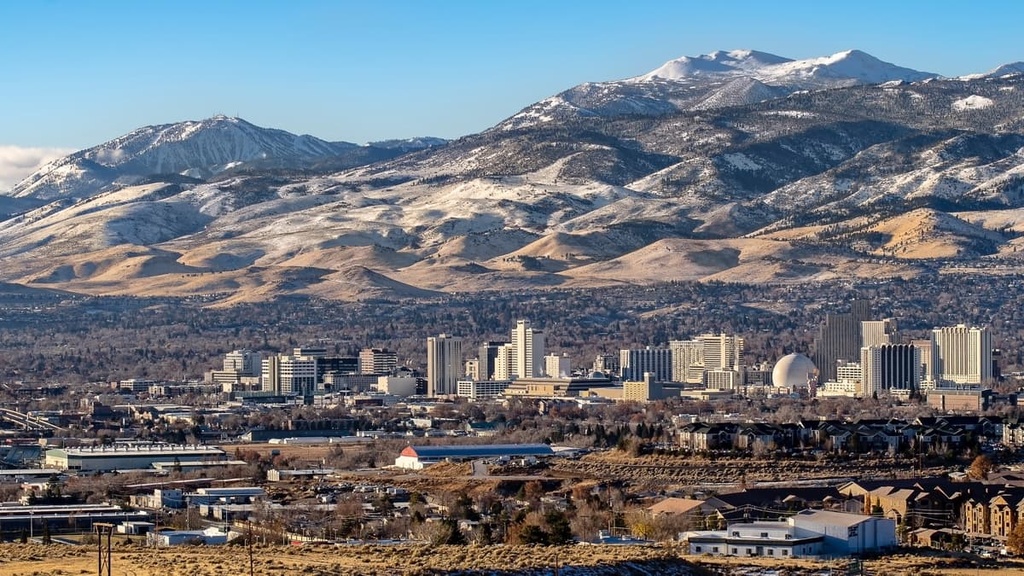
Fernley is a small, rural community that was first established in 1904 as an agricultural and ranching community. Located just outside of the Pyramid Lake Paiute Reservation, Fernley is home to the Reno-Fernley Raceway and is just 30 minutes from the historic Fort Churchill, the Buckland Station, and a Pony Express station. Visitors to Fernley can also explore various ghost towns and mining sites scattered throughout the area.
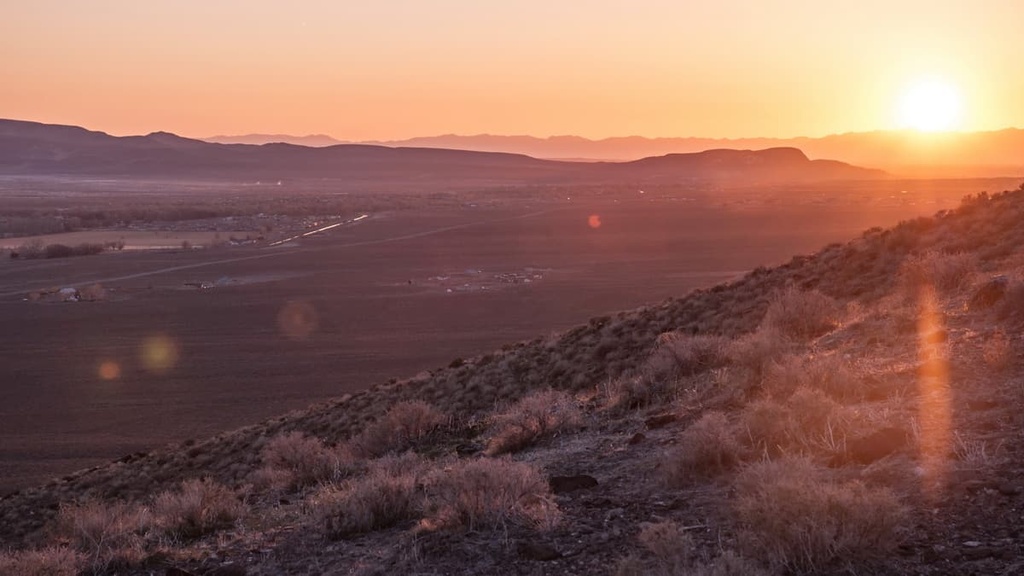
Explore Pyramid Lake Paiute Reservation with the PeakVisor 3D Map and identify its summits.








nevada-peaks-club
western-state-climbers
western-state-climbers-emblem
great-basin
nevada-peaks-club
western-state-climbers
western-state-climbers-emblem
great-basin
